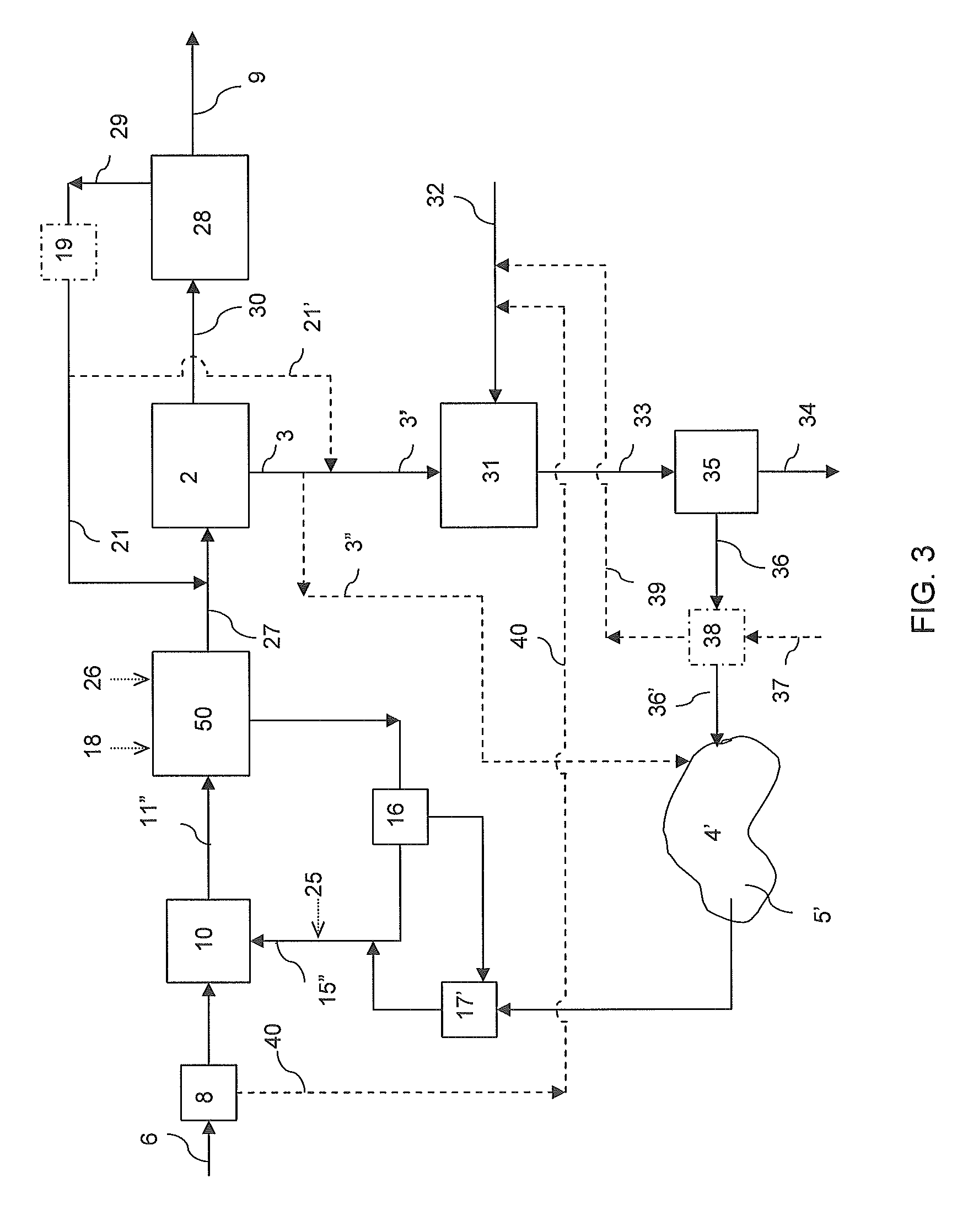Removal of impurities in the production of crystalline sodium carbonate, bicarbonate, or sulfite
a technology of crystalline sodium carbonate and impurities, applied in the preparation of alkali metal sulfite, alkali metal carbonates, separation processes, etc., can solve problems such as product quality, and achieve the effects of minimizing equipment maintenance, minimizing soda ash product friability, and reducing product quality
- Summary
- Abstract
- Description
- Claims
- Application Information
AI Technical Summary
Benefits of technology
Problems solved by technology
Method used
Image
Examples
example 1
[0220]A sample of sodium carbonate decahydrate (‘deca’) was added to the soda ash process weak liquor to increase the total alkalinity as sodium carbonate (TA) of the sample to ˜13%. The sample was analyzed for silicon by Inductively Coupled Argon Plasma (ICP) shortly after adding the deca (result ˜300 ppm; this was a semiquantitave test that turned out to be half of the actual concentration). Different magnesium compounds were added to aliquots of this solution to remove soluble silicate. Aliquots of magnesium salts were added with the goal of removing half of the silicate and all of the silicate. The mixtures were stirred for 5 minutes and then filtered through a 5-micron filter. Magnesium oxide was added as a 13.5% slurry, magnesium chloride as a 15% solution and magnesium carbonate as a 15% slurry. A portion of the starting solution was filtered with no Mg added. The final filtrates were analyzed for TA, water insoluble matter (insol) and metals by ICP. The results are presented...
example 2
[0223]A sample of deca was added to weak liquor (WL) to increase the TA of the sample to ˜13%. The sample was filtered and analyzed for silicon (˜500 ppm Si). Aliquots of a 30% magnesium chloride solution were added to a 200-g sample of the WL / deca solution to remove silicate. The solutions were mixed for 5 minutes, allowed to rest for a couple of minutes, then filtered and the final filtrates were analyzed for TA, insolubles content and metals by ICP. The MgCl2 was added in an amount to remove the molecular equivalent of 50%, 75%, 100%, and 125% of the moles of Si present, assuming that one mole of Mg reacts with one mole of Si.
[0224]
TABLE 2Silicate removal from a deca / weak liquor mixture with various amounts ofmagnesium chloride at ambient conditionsFilteredMgCl2 addedMgCl2MgCl2MgCl2Starting50%added 75%added 100%added 125%Sample:Solutionmole equivmole equivmole equivmole equivg of 30% MgCl2NA0.640.951.231.57added to 200 g ofWL / deca solutionppm Mg addedNA245363470600% Na2CO313.0213...
example 3
[0226]A sample of decahydrate was added to a weak liquor to form a deca / WL solution with a TA of ˜13%. Varying amounts of a 30% magnesium chloride solution were added to a 200-g sample of the deca / WL solution to remove soluble silicate. The resulting treated solutions were mixed for 5 minutes allowed to rest for a couple of minutes, then filtered (b & c). A control sample with no magnesium chloride added was also filtered (a). The pH of a portion of the deca / WL solution was raised to 11.7 using 10% NaOH solution. A portion of the resulting higher pH solution was filtered without any MgCl2 addition (d). Two 200-g portions of this higher pH solution were treated with the 30% MgCl2 solution, then filtered (e & f). Two portions of the unfiltered starting solution without pH adjustment were also treated with MgCl2 and after stirring for 5 minutes, the pH was raised to 11.7 with the 10% NaOH solution, and the samples were then filtered (g & h). All of filtrates were analyzed for TA, pH, N...
PUM
 Login to View More
Login to View More Abstract
Description
Claims
Application Information
 Login to View More
Login to View More - R&D
- Intellectual Property
- Life Sciences
- Materials
- Tech Scout
- Unparalleled Data Quality
- Higher Quality Content
- 60% Fewer Hallucinations
Browse by: Latest US Patents, China's latest patents, Technical Efficacy Thesaurus, Application Domain, Technology Topic, Popular Technical Reports.
© 2025 PatSnap. All rights reserved.Legal|Privacy policy|Modern Slavery Act Transparency Statement|Sitemap|About US| Contact US: help@patsnap.com



